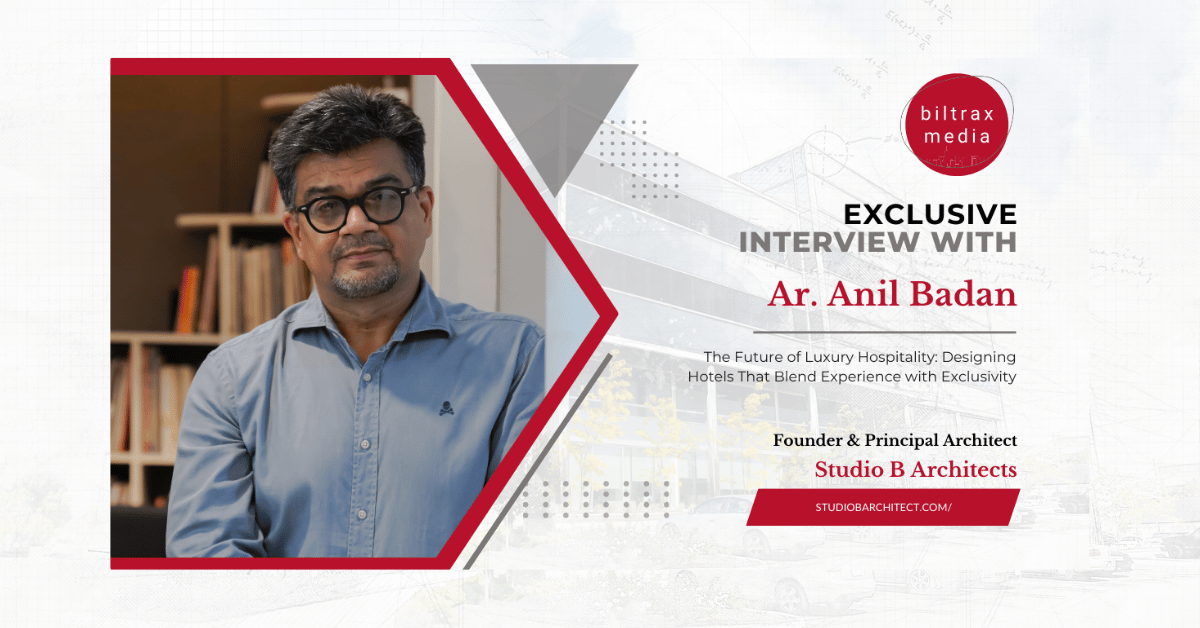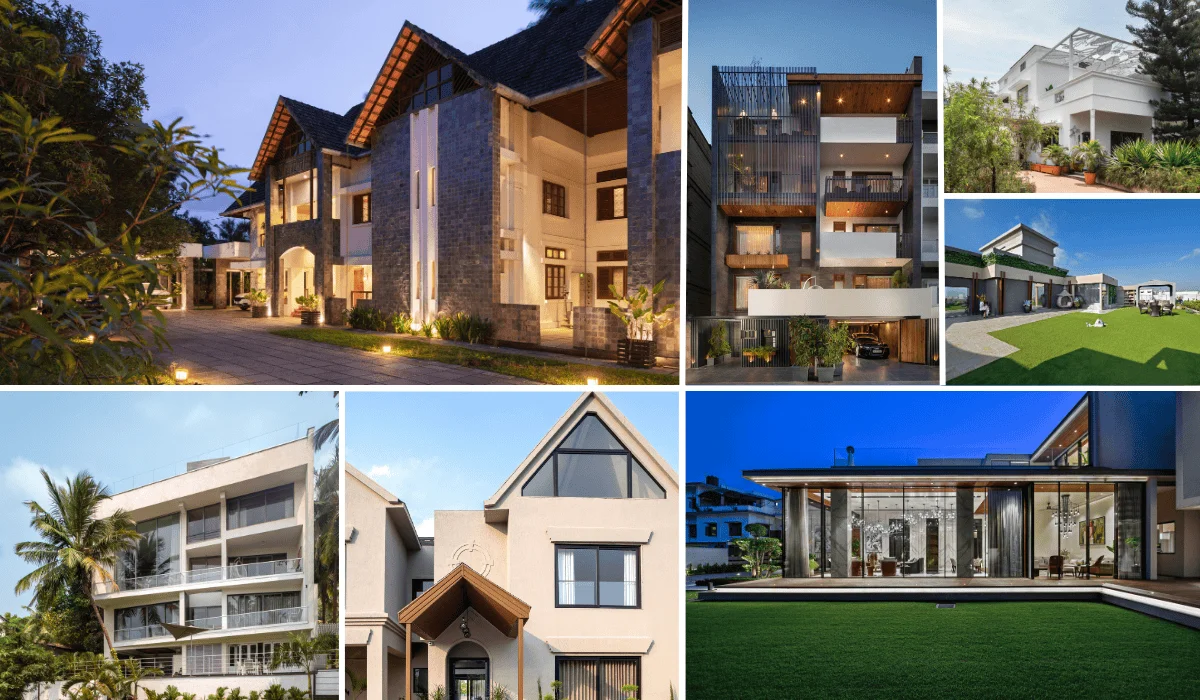Designers Group are invoking experiences through contextual and sensitive designs. An ardent believer of “being simple is difficult”, Ar. Khozema Chitalwala founded Designers Group in 1988 with an endeavour to become an internationally acclaimed design firm. This Mumbai-based firm has been engaged in materialising leading hospitality projects for luxury hotel brands. With nature and sustainability as a source of inspiration, Ar. Khozema Chitalwala discusses their design ideologies to cater client needs and provide them with a wholesome experience.
At Designers Group, it is not about the investments done in the project, but to bring balance between the demands of the target audience and the brand ambition while incorporating luxury with sustainability.
“Contextual and sensitive design adds immeasurable value to any project.” Can you share any of your projects that best describes this notion and how?
Designers Group aims to provide a touch of native flavour infused in opulence, helping connect the guest to the region’s heritage and history during their stay. The tasteful amalgamation of the two, adds to the value of the project. For instance, The Radisson Blu at Alibaug, is surrounded by manicured landscapes and green bliss. The hotel was assigned to us as a renovation project. We decided to blend the tranquil serenity and greenery of Alibaug into the design of the property through earthy tones and an open layout. The inclusion of wood laminates helped create a warm and cosy ambience while keeping a low maintenance. The lobby is transformed into an assortment of colours with blue as the primary shade, symbolising the coastal waters.


Likewise, at the Four Points by Sheraton located in Lucknow, the design is inspired by the arches of the maze at Bara Imambara, a renowned historic mosque in Lucknow. As a contemporary representation of heritage architecture, arches are integrated into the interior design vocabulary. Islamic design concepts, glasswork and filigree work are other native characteristics from Uttar Pradesh that have been included in the blueprint.
‘Luxury’ has always been the key to any hospitality project and is always seen as a contradiction to sustainability. How do you manage to merge both?
Sustainability is an essential part of all our projects, irrespective of how luxurious they are. Every individual has their own perception when it comes to defining luxury, for some it may be defined as sophisticated simplicity, for others, it could be the opulent grandeur. It is our responsibility to balance out the carbon footprint caused by every project. At Designers Group, it is not about the investments done in the project, but to bring balance between the demands of the target audience and the brand ambition while incorporating luxury with sustainability.
With luxury and charm, Devi Ratn narrates the history of Jaipur. What influenced the design process? What were the challenges faced in the refurbishment?
Taj Hotels launched a new boutique brand called ‘SeleQtion’ by IHCL and Devi Ratn is a part of this brand. The renovation of this hotel was assigned to Designers Group in 2019. While the architecture was deemed remarkable, the interiors complied with the overall design envelope during the renovation process. The design geometry of Devi Ratn builds a surreal experience for tourists, letting them explore the charm of Rajasthan.
A major challenge was the short time period provided to complete this extensive project. With this boutique category having a short launch period, most of the existing civil work was retained in order to finish the project in the stipulated time frame. Hence the existing flooring has been maintained in the lobby and the rooms with a theme developed around it to reflect Jaipur’s cultural heritage.


Hotel brands like Taj and Marriott tend to have similar hotel structures in all of their locations to maintain their brand image. How does the design of hotels vary with their location?
The idea is to emphasize local authenticity without compromising on global standards and consumer requirements. A successful hotel property must therefore reflect the culture of its location. A local sway to the design aids the guests to connect with its heritage and legacy. The global factor remains stagnant for the mainstream hotel market, even if brands are becoming prompt in providing distinguished experiences for different patron demographics. As a result, a balance between authentic design and baseline expectations have become virtually universal in the luxury market.
For example, the Wow Hotel in Indore exhibits elements inspired by a peacock. The concept was devised through elaborate research, leading to the discovery that the abundant population of peacocks has been decreasing due to rising real estate development. The interiors were an attempt to revive the memory, legacy and peacock population in the area.
Similarly, with Novotel Resort Goa, the interiors are inspired by waves’ impressions, to reflect Goan beaches and textures. This is highlighted through the overall interior design scheme and beige flooring in a dune pattern. Native flavour is added to the lobby with the help of a colourful fabric shade over the bar counter and light fixtures with waterfall designs. Design elements with a Portuguese influence thus adds to the charm.


A successful hotel property must reflect the culture of its location. A local sway to the design aids the guests to connect with its heritage and legacy.
How has the ongoing pandemic affected the hospitality industry? Are there any new design norms that are meant to be put in practice to keep people safe in hotels even with full occupancy?
The pandemic has altered the way architecture and interior design is perceived. Apart from the slowdown of overall projects, major alterations are seen in trending designs. Architects and interior designers are strictly following the new SOP’s enforced by the government. The architecture fraternity is finding solutions to the problems at the AEC level. On the bright side, the pandemic made our team recognise the importance of the human interface via working in a collaborative and digital manner.
In terms of the hospitality design sector, technological advancements and user-interactive design strategies are being incorporated in redefining post-COVID design sensibilities. From virtual meetings to remote working, the design process and operations have gone under conspicuous transformation in promoting ease of living due to the pandemic. There is a higher use of tiled and stone surfaces owing to its ease of cleanliness and diminishing traction in the use of carpeted floorings. The common areas such as pools, gyms, and the lobby are being re-approached to meet the new social distancing norms. There is now a heightened check in the hygiene standards being maintained in the choice of material, the furniture being used and even air conditioning.
What are the future endeavours for Designers Group in terms of upcoming projects and initiatives that we should look forward to?
Currently, a lot of hospitality brands consider Indian design firms less capable than their international counterparts. Thus the ultimate goal is to break this perception and prove that the Indian design fraternity is at par with their global counterparts. Being one of the only firms with a core focus on hospitality, our long-term objective is to eventually build an international repute. The notion therefore is to establish a niche for ourselves by inspiring new-gen architects. As for our upcoming projects, we are currently working on projects based in Kathmandu, Nepal.
Designers Group
Visit: www.designers-group.com
E-mail: admin@designers-group.com
Contact: 022 2444 2300
Biltrax Construction Data is tracking 17000+ projects on its technology platform for its Clients. Email contact@biltrax.com to subscribe and generate business leads.
Discover more from Biltrax Media, A Biltrax Group venture
Subscribe to get the latest posts sent to your email.

























